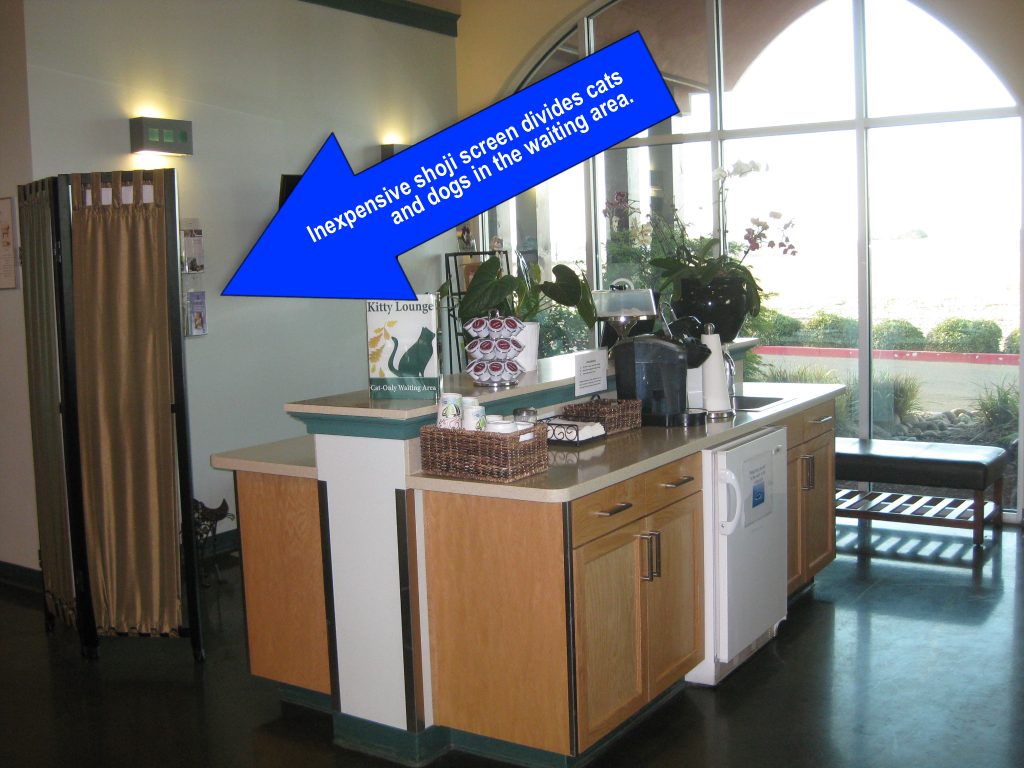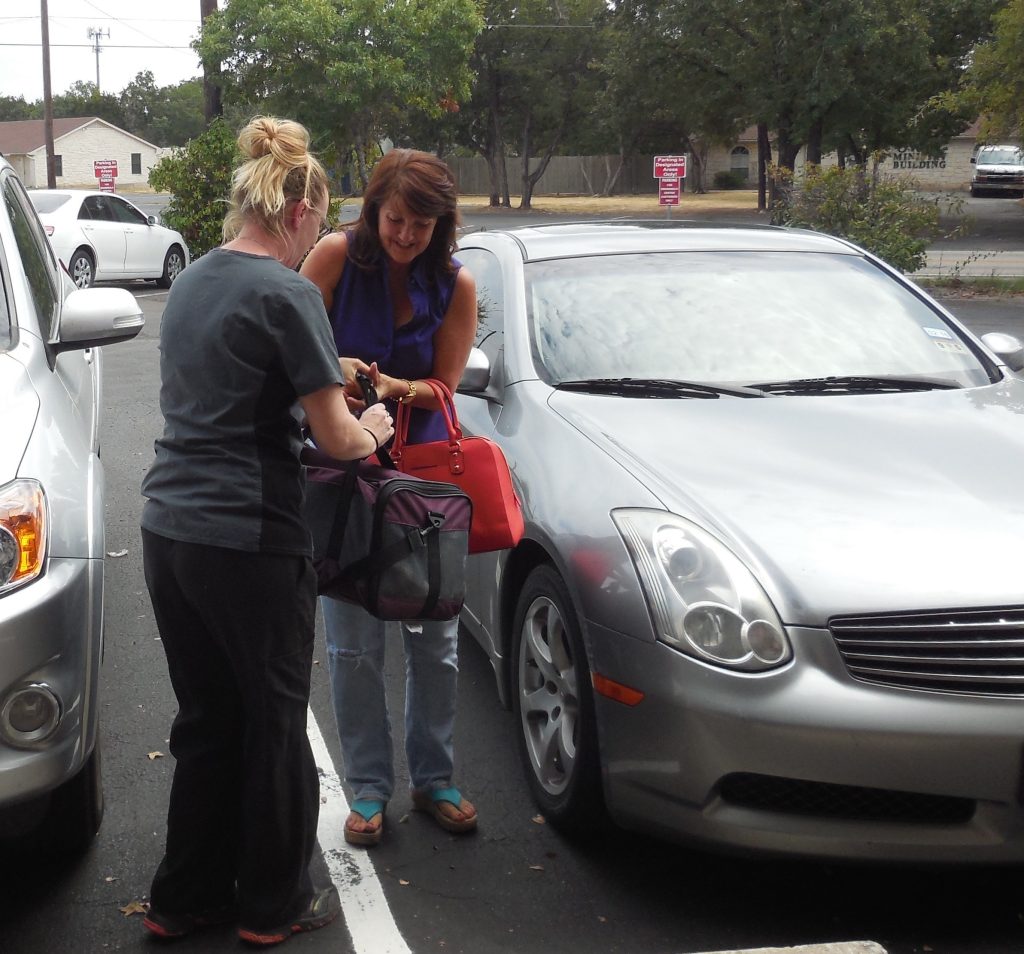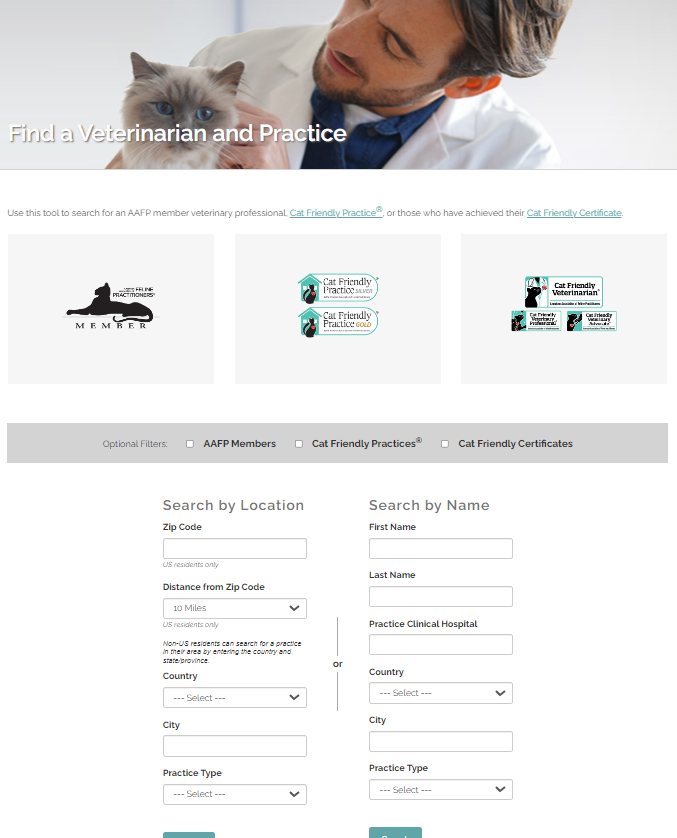Select an item below to expand
The FelineVMA understands that veterinary practices are extremely busy and may believe becoming a Cat Friendly Practice® (CFP) requires significant implementation and valued staff time. In fact, many practices working toward Cat Friendly Practice® status find they already meet many checklist items and the implementation of new items is easy to do over time.
The CFP Checklist items can be completed over several weeks or months, as the website will automatically save your progress as you go through the process. If you are limited on time, utilize your staff meetings to discuss and complete the Cat Friendly Practice® Program checklist items. Review sections of the Checklist during staff meetings instead of trying to tackle it all at once. Be sure to get the entire practice involved by assigning team members to complete the different checklist items. This is important because it takes the whole team to be on board in order to truly become a Cat Friendly Practice®.
Tips that have worked for other practices:
- Sign in to the website and go under ‘My Dashboard.’ Then look beneath the ‘Practice Resources & Tools’ tab and click the Cat Friendly Practice® link. This takes you to a member-only Cat Friendly Practice® webpage where you can click on the ‘Apply or Renew’ button located in the top right corner.
- On the Cat Friendly Practice® webpage, you can also download and print out the CFP Checklist, Guide to Creating a Cat Friendly Practice® manual, and the Frequently Asked Questions.
- Ask your Cat Advocate(s), staff who love working with cats and are willing to share the criteria throughout the practice, to go through the Checklist and mark off any of the items your practice is already meeting.
- Ask the Cat Advocate(s) to go to the practice owner or a veterinarian to ask questions about any checklist items they are not sure are being fulfilled.
- Discuss any remaining list of checklist items that need to be fulfilled at weekly or bi-weekly staff meetings. The manual, A Guide to Creating a Cat Friendly Practice®,” provides creative ideas for how to implement these items. Bring this information to the meeting so you can use it in your discussions.
- For more difficult items, assign a “Kitty Committee” Task Force that includes a veterinarian and technician to explore the item more closely in order to identify creative ways to fulfill it at your practice. If you need some advice, please reach out to the FelineVMA Headquarters at info@catvets.com. Then present the findings, solutions, and suggestions at the next staff meeting so everyone can contribute and is aware of the needed change.
- By involving all team members, you will have everyone on board with making your entire facility and experience a Cat Friendly Practice®, and they will be excited to implement new tactics and see increased visits, better experiences, and positive feedback from cat caregivers!
If you are not sure where to start, we recommend reading through the FAQs and the CFP website pages. After that, you and your team should read both the Cat Friendly Veterinary Interaction and Handling Guidelines and the Cat Friendly Veterinary Environment Guidelines. These will provide you with best practices, as well as new and creative ideas to help you on this journey. If you are a FelineVMA Member, you can log in to the website, then go under ‘My Dashboard’ and access the Guideline Briefs for both of these Guidelines (short summaries that may be helpful to your teams). If you have any questions, please reach out to the FelineVMA at info@catvets.com.
Additionally, this brochure discusses the First Steps to Become a Cat Friendly Practice® for those who have completed a Cat Friendly Certificate.
The ideal situation is to have a separate cat-only waiting area because when cats enter the practice they will assess the safety of this new environment. The waiting area should be a place that minimizes the threats cats may feel (visual, aural, olfactory, etc.). If you don’t have the space for a cat-only waiting area, you can try some of these options:
- Physical separation in the waiting area so it creates separate spaces for dogs and cats in one room. Examples: Create seating back-to-back with tall plants in between, so dogs and cats face opposite walls. Bookshelves, half walls, room dividers, shoji screens, aquariums, or counters can be used to separate the spaces to avoid visual contact. Display clear notices asking caregivers with dogs to keep them away from the cat areas. Instruct caregivers to cover the cat carrier with a large towel to avoid visual contact.


- Use a side entrance or create a separate doorway into the examination room so cats can enter without the chance of passing a dog. An alternative is to consider using an unused examination room, large storage area, or unused office for the cat waiting area if they cannot be brought immediately into the examination room.
- There are many other creative methods practices might use to reduce stress and avoid direct contact with dogs.

The CFP Program does not have to equate to a construction project. Instead of undergoing a costly renovation to create two separate waiting areas, read about how one clinic decided to think outside the box. It may be helpful to brainstorm with your practice team to identify creative ways to reduce stress during the waiting experience for cats.
Checklist items such as a designated cat-only waiting area may send up red flags as a huge financial commitment, but most of the Checklist items can be easily completed with a little creativity (see the answer to “What if I don’t have space for a cat-only waiting area?” above). Be creative about strategies to make your practice Cat Friendly. For example, keeping the waiting area free from excessive noise does not mean you need to install sound barrier walls. Instead, limit group activities to the back of the practice and remind all veterinary staff to speak quietly.
Staff can be excited to come up with creative solutions and often already have some ideas in mind. Check out the CFP Program’s database of case studies for some inspiration. If you are having trouble coming up with a creative solution for a checklist item, please contact FelineVMA Headquarters at info@catvets.com so we can assist you and provide suggestions that may work in your practice. Also, reach out to your colleagues at FelineVMA meetings or by using the membership directory. There may be some practices that have come up with unique ideas that you have not thought of yet!
Your practice may already have Cat Friendly policies and procedures in place. This is all the more reason to become a Cat Friendly Practice®. Since your practice has a Cat Friendly culture in place, you have already completed most of the work. Achieving Cat Friendly Practice® status allows your practice the opportunity to appropriately market to potential cat caregivers who may not know that your practice is Cat Friendly, and provides new and innovative suggestions that allow even the most feline-friendly practices to improve in some way. By achieving Cat Friendly Practice® status, your practice can publicly declare your dedication toward improving the care delivered to cats. A paper published in the JFMS also highlights the benefits of being a Cat Friendly Practice® versus non-CFPs.

You will also have access to resources, marketing tools, and educational materials, and be listed as a Cat Friendly Practice in an online search on our cat caregiver website. Since you are already a FelineVMA Member, why not go through the process to become a Cat Friendly Practice® so you can have access to these additional resources only available to Cat Friendly Practices®.

The Cat Friendly Practice® (CFP) Program was designed to engage the entire veterinary team. The status of being a Cat Friendly Practice® can be successfully achieved by large and small practices alike. Although the practice will need to designate at least one to three Cat Advocates, everyone on the veterinary healthcare team should understand normal cat behavior and Cat Friendly interactions/handling, as well as be willing to work together to continually improve the ways they provide care for cats.
Cat Advocates play a crucial role in becoming a Cat Friendly Practice® because they help champion the Program and communicate the Cat Friendly standards throughout the practice. Additionally, they provide guidance, tools, and resources to team members to help the practice achieve CFP status. Cat Advocates should be knowledgeable about the Cat Friendly Practice® Program, the CFP Checklist, the Cat Friendly Veterinary Interaction Guidelines and Cat Friendly Veterinary Environment Guidelines. They are usually chosen for their experience, empathetic manner, and willingness to help answer cat caregiver questions. The Cat Advocate role is frequently filled by technicians, practice managers, and support staff who love working with cats.
Once you complete the Checklist, upload your photos, and submit your application, it will be reviewed within two weeks. If further information is needed, you will receive an email with specific questions. Please watch for emails and reply promptly in order for your approval to be expedited. Once you are approved, you will be notified via email, be added to the Cat Friendly Practice® search online, and receive instructions for how to log into the Cat Friendly Practice® Toolkit so you can download the CFP logo, posters, and access educational and marketing resources. Your Cat Friendly Practice® certificate is available for you to print in the ‘My Dashboard’ section of the website.
The Cat Friendly Practice® approval is valid for three years from the date of the approval email confirmation. During that time, your practice must maintain at least one veterinarian membership with the FelineVMA in order to keep your Cat Friendly Practice status®. Enrolling in membership autorenewal can help avoid any interruptions. If you need to change the veterinarian membership to another person, you must inform the FelineVMA at info@catvets.com to be sure that the Cat Friendly Practice® status is switched to the new member so the practice continues to be listed as a CFP on the cat caregiver website.
Yes, the FelineVMA believes practices need to continue to receive support and educational materials on an ongoing basis. The materials include :
- A bi-monthly e-newsletter which is sent to each Cat Friendly Practice®. the Cat Advocate(s) and FelineVMA Member(s) will receive a bi-monthly email with new information, tools, educational materials, and resources that can be utilized in your practice.
- Educational presentations to be offered at FelineVMA Conferences, FelineVMA Tracks at other major veterinary conferences, and through complimentary member webinars. Access the FelineVMA’s Webinar Portal.
- Additional resources and materials are continuously being developed, including promotional content for cat caregivers. Access a list of ready-to-use cat caregiver educational brochures and flyers.
Cat Friendly Practices® are required to have at least one FelineVMA veterinarian member. However, it is not a requirement that a member from your practice has completed their Cat Friendly Veterinarian® Certificate. While not required, the Cat Friendly Veterinarian®, Cat Friendly Veterinary Professional®, and Cat Friendly Veterinary Advocate® Certificates can be used to assist with training as well as onboarding for new staff to your Cat Friendly Practice® as well as to help prepare your team for becoming a Cat Friendly Practice®.
© Copyright 2012 – 2024 International Cat Care and Feline Veterinary Medical Association. All rights reserved.
